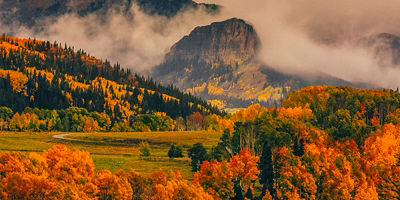
Tucked along the banks of the mighty Cuyahoga River, just south of Cleveland, lies a 33,000-acre pocket of verdant hills, lily-lined ponds, and deep forest. Deer flit through the dappled sunlight and river otters twist beneath the water’s glassy surface. In a place like this, it’s easy to forget that you’re just 20 miles from one of the Midwest’s biggest cities.
And that’s exactly what the park’s founders had in mind. Created in 1974 by an act of Congress to carve out a protected zone between the cities of Cleveland and Akron, the Cuyahoga Valley National Recreation Area (later designated a national park) ensured that locals would have access to wild places for generations to come. Today, over 2 million annual visitors come to trace the banks of the twisting Cuyahoga by foot, bike, and boat.
Because of its close proximity to the city centers, the park stands as a monument to the ever-evolving relationship between humans and nature. Amid the hardwood trees and wetlands, you can spot the remains of old dams and bridges, 19th-century mills, and artifacts from over 500 generations of Native American history. To walk through the park is to walk through all the layers of Ohio’s past.
With 22 miles of river, 125 miles of trail, and dozens of historic sites, Cuyahoga Valley National Park has plenty of adventures to choose from. Narrow down your options below to make the most of your next visit.
Making a Comeback
In 1969, the Cuyahoga River burned. Just north of the national park’s current boundaries, a wayward spark caught an oil slick and trapped debris in an industrial section of Cleveland, lighting up the water in a blaze that lasted about a half-hour. Today, the fire is remembered as a symbol of the pollution our nation’s waterways once suffered—and a turning point in American environmentalism.
More than 50 years later, Cleveland still remembers the fire. But thanks to partnerships between government agencies, nonprofits, and local volunteers, the river is on the mend. Fish wriggle beneath the surface, and the banks are lush with greenery. There’s still work to do, but the river stands as a testament to both the power of cooperation and nature’s ability to heal.
The Human History of Cuyahoga Valley
Northeast Ohio’s Indigenous history spans for more than 13,000 years. The area’s first inhabitants were hunters and gatherers who followed game animals across the landscape and arrived just after the last Ice Age. The first permanent settlements appeared 10,000 years ago with a civilization now known as the Archaic people. For the next 9,000 years, a collection of tribes called the valley home, hunting, farming, and building complex earthworks for ceremonial uses. By the time European settlers first arrived, all the Native residents had moved away from the valley, and fur traders became its primary residents.
It wasn’t until the 1950s that Native peoples returned to the area. Relocation efforts displaced thousands of tribal members from reservations across the West to Cleveland as part of a government-sponsored assimilation program. The program promised jobs but ultimately resulted in discrimination, adverse mental health effects, and economic hardship for many of those who were resettled. Today, Cleveland’s Native residents work together to celebrate and remember their culture and navigate the relocation program’s complicated legacy.






















